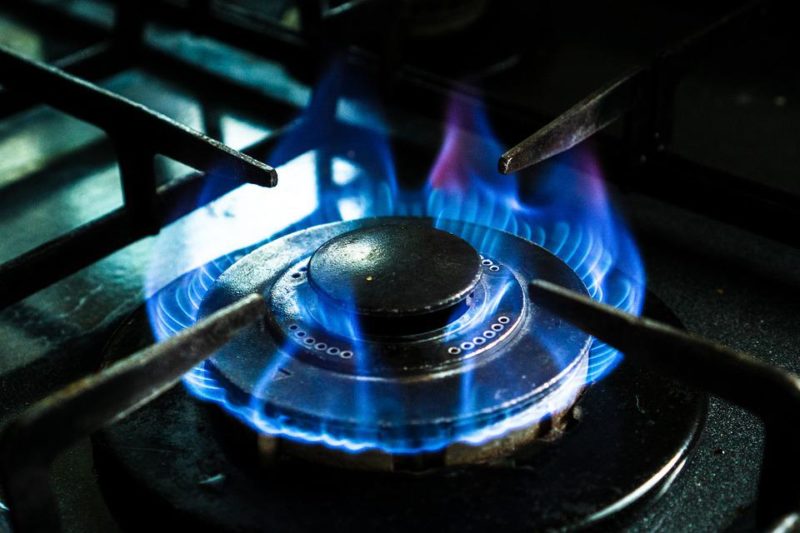Maybe you wondered and asked yourself: how to fill gap between stove and counter? Silicone, plastic tubing, gap covers, filler strips, or worktop trims can all be used to bridge the space between your stove and the countertop. The most effective strategy is determined by the magnitude of the gap. Silicone is suitable for tiny apertures.
If you have significant space between the stove and the worktop, pre-made gap coverings or filler strips are preferable options. You’ll have difficulty whenever there is a space between the stove and the countertop. Food thrown over the gap vanishes into the vacuum, never to be seen again!
Out of eye, out of mind may be true to specific individuals but not to mice, cockroaches, and other insects. You must close those openings to prevent mice out of the stove and away from your kitchen! No need to be concerned! It’s a simple procedure that will prevent you from trying to scrape the stove out every time you use it to wipe between the gaps! So without further ado, let’s get started!
Ways To Fill Gap Between Stove And Counter
So, how to fill gap between stove and counter? Below we have listed simple solutions for closing the space between your standalone countertop and your stove.
#1. Use silicone
If you have a range stove, there will always be gaps between the stove and the countertop. If you’ve appropriately sized your kitchenware, the cooker should fit snugly, and you may use a silicone strip to bridge the space between the stove and the countertop. This is an easy and low-cost option. Silicone comes in various colors, or you may go for a definitive version to fit your kitchen’s decor. Wear plastic gloves and dab a drop of silicone down the countertop and stove sides. Allow just several minutes to cure after smoothing it with your fingertips. When the silicone hardens, it forms a watertight barrier that keeps fragments and fluid spillage out.
#2. Use caps gap
Pre-made gap covers, also called gap caps, are specially designed coverings that fill the space between countertops and stoves. They’re perfect for constructing a barrier between the countertop and the stove when you require an extra broad stove gap filler. Stainless steel or PVC oven space fillers are available. The PVC comes in a more comprehensive range of colors and is more likely to fit the most typical countertop surfaces.
Stainless steel is more robust and more demanding, but there are fewer finish possibilities. These gap caps are simple to apply regardless of your preference. Just calculate the size of the T-shaped strip and cut it to fit. Simply insert it in the hole, and that’s all there is. Wear plastic gloves and dab a drop of silicone down the countertop and stove sides. Allow just several minutes to cure after smoothing it with your fingertips. When the silicone hardens, it forms a watertight barrier that keeps fragments and fluid spillage out.
#3. Rubber gap filler strips
Gap Filler Strips are made of rubber and fill the gaps between objects. Rubber gap filler strips are not meant to fit the space between a countertop and a stove, however, if you can’t locate a gap cap in the right size, they’ll suffice. Rubber gap filler strips benefit from being accessible in a variety of sizes. The most significant disadvantage is that it does not have the same appealing look as a custom-made space cover. When you don’t want to use a gap cap, purchase a rubber strip that’s slightly broader than that of the space. For a watertight seal, push this into the gap.
#4. Strips for worktops
When connecting different countertop edges, jointing strips can be helpful, but they may also be used to bridge a little space between the countertop and the stove. They’re often constructed of plastic or aluminum alloys; Because of the resistance, we recommend aluminum.
However, plastic ones have a more extensive range of colors. They have a close look to T-shaped gap covers and may have been used similarly: trim to length and insert well over space. Worktop trims and border strips, in contrast to jointing strips, might be repurposed. For small areas, edging tape performs well. You may also be interested to know about avoid these common kitchen design mistakes.
#5. Tubing made of plastic
When it concerns filling the gap between the stove and the counter, plastic tubing would not be the first item that springs to mind. If you need to cover a large opening, don’t even have a gap cover, and don’t wish to go to the store, you may use it instead of gap caps.
Covering the gap using plastic tubing generally succeeds if the gap is the same diameter as the tubing or somewhat greater. To build a spill-proof barrier, you must additionally seal the edges with silicone. Ensure the tube’s end is butting against the wall to fill the gap. With your finger, guide the tube through the gap and into the aperture. Don’t overwork the tube; it must be level with the countertop. Cut off surplus tubing and run a dab of silicone around both sides.s
It’s A Wrap!
Finally, we’ve discussed how to fill gap between stove and counter? Although a gap is unattractive, there are solutions to fix it without sacrificing the looks of your kitchen. We trust that this guide will assist you in determining the best option for your needs. Thank you, friends, for being with us at the end! You may also want to read about how to fix stovetop burners and what is the difference between a stove and range.

